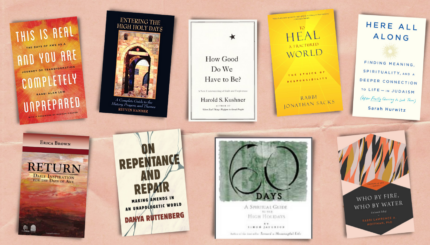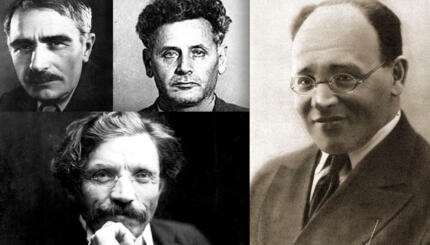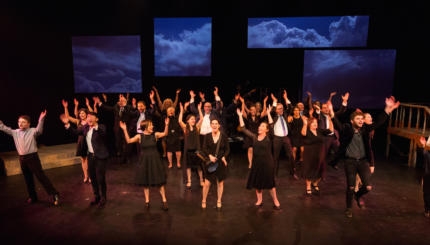Chagall, Modigliani, Frida Kahlo, Jacques Lipchitz–these are just some names of the world’s great artists whose families of origin were Jewish (or partly Jewish). While the work of great Jewish artists continue to inspire generations, the concept of “Jewish art” remains a problematic one. The nagging question is, “What makes Jewish art Jewish?” Is any art created by a Jewish artist included as Jewish art, or does the theme of the art itself need to have some Judaic inspiration or influence?
When many people think of the arts as connected to Judaism, they may first think of the literary arts–and rightly so. Known as the “people of the book,” part of Judaism’s great contribution to humanity has been its outpouring of texts. But Judaism also has produced a tradition of fine arts and handicrafts throughout Jewish history. While a prohibition against creating “graven images” goes back to Biblical days, there is nothing in Jewish law that prevents creativity as it relates to hiddur mitzvah–literally translated as “making a mitzvah, or commandment, beautiful”–a concept that has led to a rich heritage of Jewish ceremonial and ritual art. Dating back to ancient times, artifacts such as tombstones were engraved with Jewish symbols–stars, lions, shields–that were clearly created for adornment and beauty. From the Middle Ages on, the elaborate traditions of Jewish art included illuminated ketubot (wedding certificates), ornate silver Torah crowns and breastplates, and other such items.
Besides hiddur mitzvah, art also has a place in Jewish tradition as a teaching tool. With the discovery of ancient Jewish archeological sites, such as the synagogue located in the city of Dura Europus–which is now part of modern-day Syria–we learn that a narrative form of art also existed, which depicted the figures from Bible stories as a way of sharing and teaching Torah. Whether it was narrative or ceremonial, Jewish art was, for centuries, deeply intertwined with religious life.
In addition, Jews have had a presence in the world of “art for art’s sake”; in fact, for centuries, there have been great works of fine art created by Jewish painters and sculptures. With the European Enlightenment came a change in all of Jewish life–as young Jews were able to leave their closed communities of the ghettos to study in secular environments, some of them were drawn to the world of secular arts. Jewish artists studied the works of the great European masters and began experimenting with a range of styles and forms. While some artists, like Moritz Daniel Oppenheim, painted work with clearly Jewish themes, many artists who followed him considered themselves “emancipated” from their Jewish roots and did not make connections between their backgrounds and their art.

Help us keep Jewish knowledge accessible to millions of people around the world.
Your donation to My Jewish Learning fuels endless journeys of Jewish discovery. With your help, My Jewish Learning can continue to provide nonstop opportunities for learning, connection and growth.
By the 20th century, Jewish artists lived and flourished in four different art worlds–Russia, Paris, the United States, and the land of Israel. Jewish artists of the Diaspora–those living outside of Israel–faced competing pressures: They were pulled to be part of a renaissance of Jewish cultural life and also to move further away from Judaism in order to seek total artistic liberation. For example, the well-known painter Marc Chagall was able to incorporate the Jewish world of his childhood into his unique style of modern art, while other well-known Jewish artists of the time, such as Amedeo Modigliani, rarely expressed Jewish content in their work.
The major events of the 20th-century for the Jewish people–World War II and the Holocaust and the birth of the modern State of Israel–had lasting effects on Jewish art in the Diaspora. Numerous works, such as Chagall’s “White Crucifixion,” attempt to deal with the pain and devastation of the Holocaust. Many Jewish-American artists–such as Ben Shahn and Leonard Baskin–created an art intended for a general audience with clear Jewish content.
Among contemporary Jewish artists, there exists a wide spectrum of ways in which they may express their Jewishness in their art. Judy Chicago, for example, has created bold Jewish feminist statements with her installation-style art, while Tobi Kahn has used found objects to create magnificent ritual objects. In fact, the proliferation of Jewish artists specializing in making fine Judaica–from magnificent ketubot and huppot (marriage canopies) to seder plates and cups made of every material and style–returns us, in a circle, to our heritage of honoring hiddur mitzvah.



